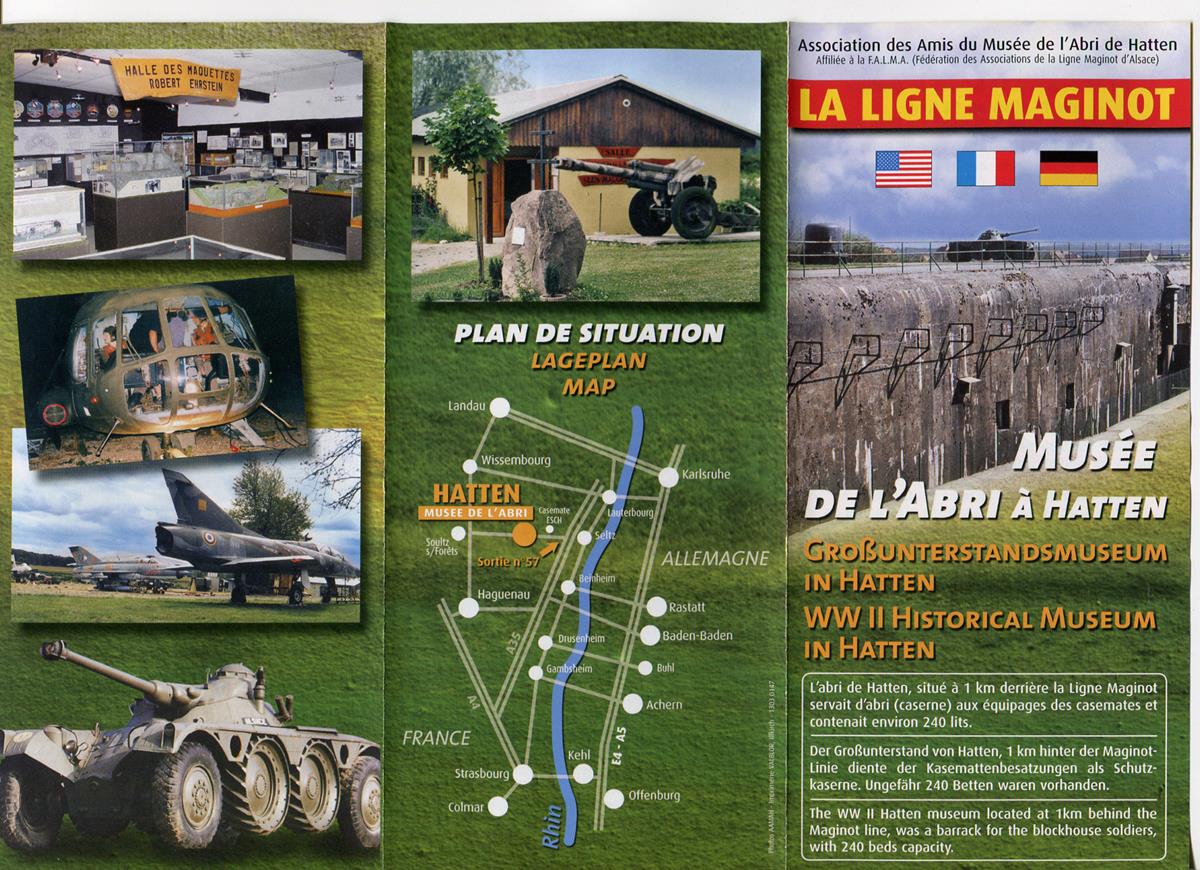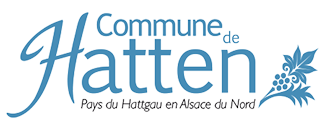Experience World
The large shelter "ABRI" of Hatten is located about 50 km from Strasbourg and 40 km from Karlsruhe. A total of 19 fortifications of the Maginot Line were built in the Hatten area. With a capacity for 220 men, "ABRI" was the largest. The bunker was built from 1930 onwards with all the necessary equipment to house and supply a company in case of war.
Experience World
Museum Bunker
No fewer than 19 Maginot Line works were built from 1930 onwards on the territory of the town of Hatten, a village on the edge of the great forest of Haguenau at its eastern end. These works include many small bunkers, but also a beautiful OBSERVATORY (not open to visitors) and of course the ABRI, the largest with its 28 reconstituted rooms, some identical, the others in thematic exhibition rooms.
Museum grounds - exhibition halls and open air exhibition
Open Air Exhibition House of Models Hall of the Forcibly Conscripted .Hall 1944-1955
Forest of Remembrance - Bois du Souvenir
The memorial forest with its 114 trees commemorates the 114 civilian victims of the 2 communities of Hatten and Rittershoffen. In the middle of the wood, under a modern building open to the 4 winds, stands the CHARETTE DU SOUVENIR. It was used to transport the bodies of hundreds of military victims (American or German) and civilians.
Map
Monument and History
History The Abri de Hatten museum is located in a former underground barracks for French soldiers on the former Maginot Line. Part of the 28 rooms of the bunker have been restored to their original state. others are dedicated to different themes concerning the history of Hatten during World War 2. There are also interesting things to see on the grounds surrounding the bunker: An extensive collection of military equipment and material from 1939 to the present day, a collection of models, memorials to the forced conscripts "Malgré-nous", a hall with exclusively American or German material from 1939 to 1945. In scenes, battle of January 1945 is re-enacted in Hatten. During the Northwind Offensive launched by Germany, German and American fighters faced each other with hostility in Hatten and around it from 9 to 21 January 1945. Hatten and the neighbouring village of Rittershoffen became the scene of one of the bloodiest tank battles in France. In battles between German and American tank units, 2500 soldiers lost their lives. Memorial tourism and the Maginot Line - Pays de Haguenau
Quelle: Musée de l’Abri Quelle: Musée de l’Abri Quelle: Musée de l’Abri Quelle: Musée de l’Abri
Architecture Between 1928 - 1940, under the Minister of War André Maginot, one of the largest continuous fortification systems in the world was built - the Maginot Line - today a national monument of France.Large shelter (Abri)
Quelle: Musée de l’Abri Quelle: Musée de l’Abri Quelle: Musée de l’Abri Quelle: Musée de l’Abri
Partner







